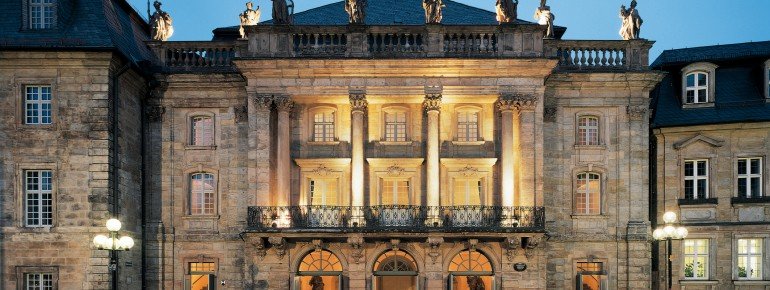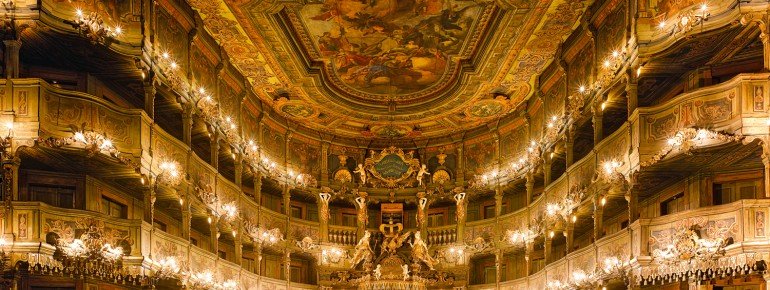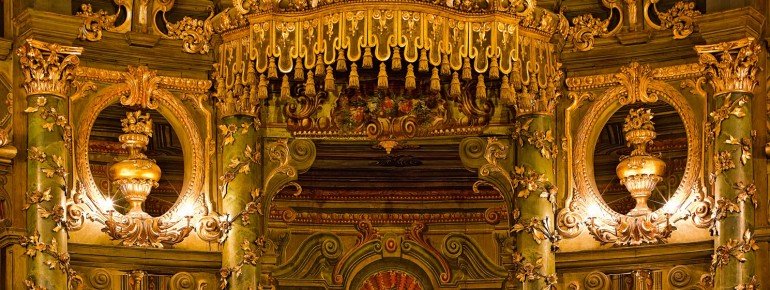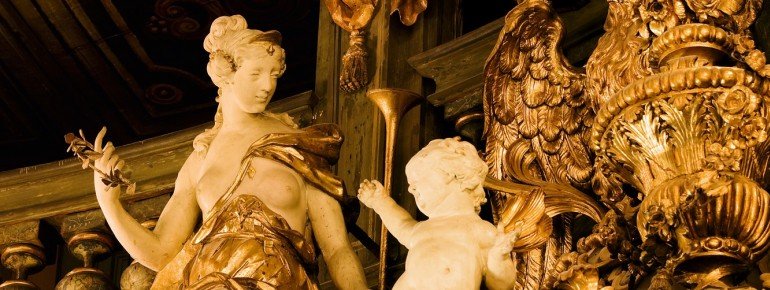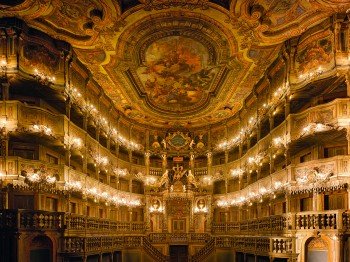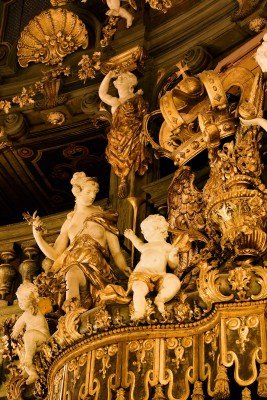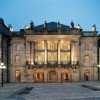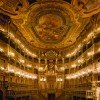Contents
Description
The Margrave's Opera House, whose Logentheater is made entirely of wood, is considered to be the most beautiful and largest preserved Baroque theatre in Europe from the 18th century.
The stage portal is framed by columns and numerous sculptures and Baroque paintings adorn the impressive interior of the opera house. From 2013 to 2018, the Logenhaus was lavishly restored, preserving the ephemeral illusionary art of the Baroque era.
Historical Information
The Margrave's Opera House was built between 1746 and 1750 on the occasion of the engagement of Elisabeth Friederike Sophie, the daughter of Margrave Friedrich and Wilhelmine, to Duke Carl Eugen of Württemberg.
Architecture
The building with its strict facade was erected by the Bayreuth court architect Joseph Saint-Pierre. Giuseppe Galli Bibiena, from a famous Bolognese theatre family, was commissioned to furnish the interior. Its serious, Italian baroque style is very different from the rather cheerful Bayreuth rococo and sets the Margrave's Opera House apart from other famous buildings in the city.
Opening
Although it was not completely finished at the wedding in September 1748, the theatre was inaugurated on the occasion of the festivities with performances of the operas "Il trionfo d'Ezio" and "Artaxerxes". The libretto for the opera "Artaxerxes" was written by Margravine Wilhelmine herself, who had a distinct artistic streak.
How to get there
By car:
Bayreuth can be reached via the A9 Munich-Berlin and the A70 Bayreuth-Schweinfurt as well as via the federal roads B 2, B 22 and B 85. The Marktgräfliche Opernhaus is located directly in the city centre. Parking is available in the underground car parks P7 or P13 (located behind the opera house)
By public transport:
The Margrave's Opera House is only a 10-minute walk from Bayreuth Central Station. This can be reached by bus 302, stop "Luitpoldplatz"

